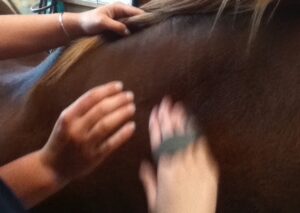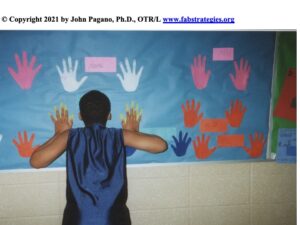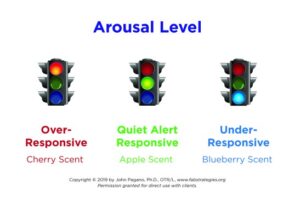Occupational, speech/language, physical and mental health therapists play important complementary roles in intervention for youth with early severe PTSD “Post-Traumatic Stress Disorder” and complex behavioral challenges. This is especially true for those with pediatric PTSD and Autism Spectrum and other developmental disorders. Joint treatment by pediatric rehabilitation and mental health therapists can address the interrelated sensory and self-regulation skills that provide a foundation for improved emotional regulation.

Youth with Post-Traumatic Stress and Autism Spectrum Disorder have significantly greater incidences of neurologically based interoceptive awareness, sensory reactivity, and praxis (e.g., organizing bodily actions) challenges (Roley et al., 2015; Craig, 2015). Young people with developmental and early trauma experiences often need multidisciplinary treatment to address the neurologically based bodily dissociation, sensory discrimination, and interoceptive awareness challenges that are significantly related to behavior problems (Debellis et al., 2013; Teicher et al., 2016; Cross et al., 2017).

Interoceptive Awareness (IA) is the ability to notice, monitor, give meaning to and regulate the internal conditions of the body). Sensory modulation includes the ability to self-regulate a calm alert state and express organized body-based actions for self-regulation. Manualized occupational therapy intervention appears to improve behavior in Autism Spectrum Disorder by teaching youth to integrate interoceptive body awareness with sensory coping strategies e.g., “notice my fisted hands mean I’m angry and should take a walk for self-regulation” (Craig, 2015; Hample et al., 2020). FAB Strategies offer transdisciplinary manualized interventions that are particularly helpful for youth with PTSD, dual diagnoses, and complex behavioral challenges (Pagano, 2019) FAB Strategies Approach

References
Craig AD. How do you feel? An interoceptive moment with your neurobiological self. Princeton University Press; 2015 Dec 31.
Cross D, Fani N, Powers A, Bradley B. Neurobiological development in the context of childhood trauma. Clinical Psychology: Science and Practice. 2017 Jun;24(2):111.
De Bellis MD, Woolley DP, Hooper SR. Neuropsychological findings in pediatric maltreatment: Relationship of PTSD, dissociative symptoms, and abuse/neglect indices to neurocognitive outcomes. Child maltreatment. 2013 Aug;18(3):171-83.
Hample K, Mahler K, Amspacher A. An interoception-based intervention for children with Autism Spectrum Disorder: A pilot study. Journal of Occupational Therapy, Schools, & Early Intervention. 2020 Oct 1;13(4):339-52.
Pagano, J. FAB functionaly alert behavior strategies: Integrated behavioral, developmental, sensory, mindfulness & massage treatment. Connecticut: Pagano FAB Strategies, LLC: 2019.
Roley SS, Mailloux Z, Parham LD, Schaaf RC, Lane CJ, Cermak S. Sensory integration and praxis patterns in children with autism. American Journal of Occupational Therapy. 2015 Jan 1;69(1):6901220010p1-8.
Silva LM, Schalock M, Gabrielsen KR, Budden SS, Buenrostro M, Horton G. Early intervention with a parent-delivered massage protocol directed at tactile abnormalities decreases severity of autism and improves child-to-parent interactions: a replication study. Autism Research and Treatment. 2015 Oct;2015.
Silva L, Schalock M. Treatment of tactile impairment in young children with autism: results with qigong massage. International Journal of Therapeutic Massage & Bodywork. 2013 Dec;6(4):12.
Stavropoulos, K. K. M. (2017). Using neuroscience as an outcome measure for behavioral interventions in Autism spectrum disorders (ASD): A review. Research in Autism Spectrum Disorders, 35, 62-73.
Stevens FL. Affect regulation and affect reconsolidation as organizing principles in psychotherapy. Journal of Psychotherapy Integration. 2019 Sep;29(3):277.Teicher MH, Samson JA, Anderson CM, Ohashi K. The effects of childhood maltreatment on brain structure, function and connectivity. Nature Reviews Neuroscience. 2016 Oct;17(10):652.
Teicher MH, Samson JA, Anderson CM, Ohashi K. The effects of childhood maltreatment on brain structure, function and connectivity. Nature Reviews Neuroscience. 2016 Oct;17(10):652.reha
